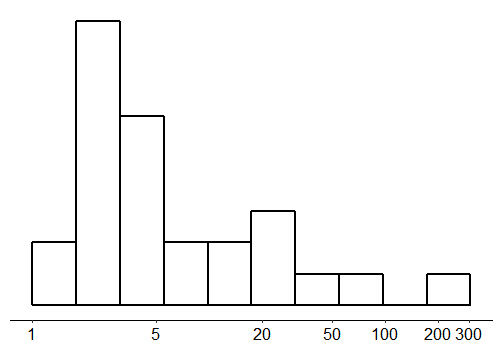FindingFive aims to help researchers quickly prototype a study, but how quickly can one actually create a study on FindingFive? In this post, we’ll try to give an empirical answer to this question.
Method
We decided to look at one particular measure: the number of days between the moment a new study came into existence and the moment the study recruited its first participant. Let’s give this measure a name: “Prototyping Duration”.
We pulled data on researcher activities from September 2017 to August 2018 (our first “Fiscal Year” as an official 501(c)(3) nonprofit organization). Only a couple of exclusion criteria were applied. First, studies that did not recruit participants within this time frame were excluded. Second, studies with a preparation duration of less than 1 day were excluded (there are a couple of reasons for such a short duration but we won’t go into the details here). There were a total of 35 studies that remained in the final data set (we’ll have a lot more data to analyze in FY 2019!).
Results
Figure 1 shows the distribution of prototyping duration among those 35 studies. Note that the x-axis has been slightly log-transformed to make the figure more readable. Again, the preparation duration is measuring how long it took researchers to go from just starting to work on a study to when the study first collected participant data. Amazingly, a majority of studies were done within as little as 20 days! The mean is 19.8 days, but since the distribution has a heavy right tail, the mean is strongly influenced by the couple of studies that took a long time to get ready.

Discussion
What does this mean? Should a prospective FindingFive researcher expect to finish creating their study within 20 days from scratch? Yes and no.
The answer is yes because data is what it is. At the same time, researchers who use FindingFive almost never have to create a study from scratch! We have noticed that nearly all researchers followed our Crash Course to create a demo study. Then, when it comes to creating their actual research studies, researchers can simply make copies of the demo study and modify it in place. This process greatly shortens the amount of time needed for designing a study, which, in our opinion, is one of the reasons why FindingFive is so easy to use.
In other words, what Figure 1 does not show, is the amount of time that researchers spent on learning about FindingFive and its Study Specification Grammar. Therefore, we don’t really think it’s realistic to expect that one can launch a study within 20 days from the moment of signing up! We have designed an easy to use platform, but some learning is still required. 🙂
Conclusion / The Promotional Bit
Researchers have told us that they find the FindingFive framework of defining a study quite intuitive. That is, researchers create studies on FindingFive by specifying the content and structure of a study in terms of stimuli, responses, trial templates, and the procedure, which is familiar to a behavioral researcher, rather than the programmatic flow of a web app acting like a study, which can be challenging. The data presented in this blog lends support to the effectiveness of this framework.
So, why not give FindingFive a try if you haven’t already? Sign up here!


Comments are closed.